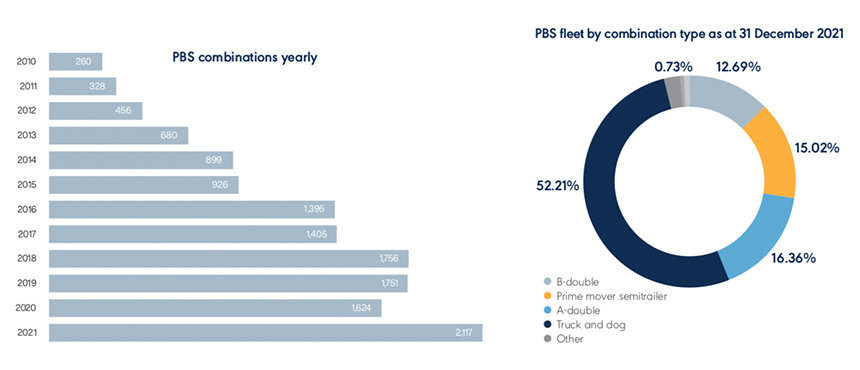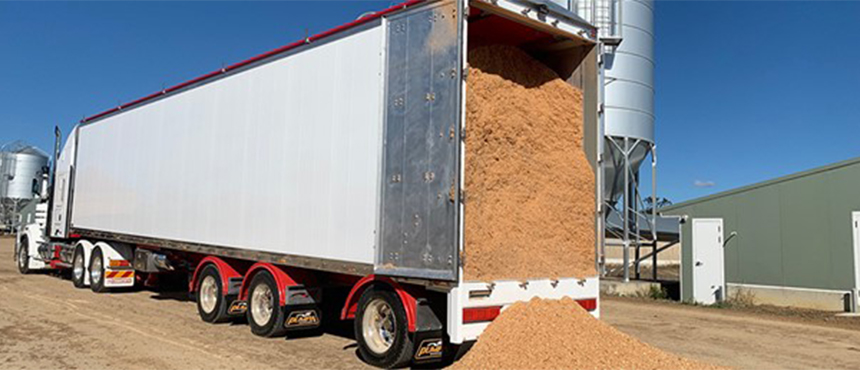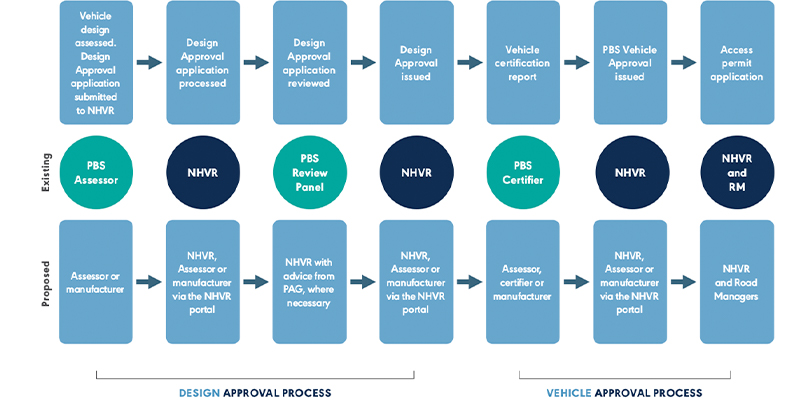PBS 2.0 – What does it mean?
The NHVR is in the process of developing the next phase of PBS, but what does this mean for industry?
The Performance Based Standards (PBS) scheme sets on-road performance standards for many heavy vehicles in Australia. The scheme aims to improve the safety and productivity of the heavy vehicle industry by allowing vehicles that meet certain criteria to operate more efficiently and with more flexible dimensions than standard vehicles.
Over the last decade, the uptake of PBS in Australia has increased dramatically, and PBS vehicles now comprise a substantial portion of the transport fleet in Australia.

Figure 1 – PBS fleet statistics. Reproduced from the NHVR’s PBS 2.0 discussion paper
What is PBS 2.0?
Recently, the National Heavy Vehicle Regulator (NHVR) has begun reaching out to industry to discuss what PBS 2.0, an updated version of the scheme, may look like. In this article, we will take a closer look at PBS 2.0 and how it affects the Australian heavy vehicle industry.
While the goals of PBS 2.0 are still up for debate, the NHVR’s preferred goals are to:
- Ensure PBS vehicles remain at the forefront of innovation through the dynamic management of PBS Standards.
- Create a lifecycle for a PBS vehicle from initial concept through to exit from the PBS scheme for common and mature design concepts.
- Expedite end-to-end approval processes through opportunities for third parties – such as, assessors, certifiers and manufacturers – to support delivery of regulatory functions.
A detailed discussion of the proposed methods of achieving these goals is laid out in the PBS 2.0 discussion paper.
Point 1 is really just a continuation of the original intent of the PBS scheme; to allow for the development of new and innovative heavy vehicles to further increase the productivity of Australia’s transport fleet.
Initiatives to achieve this goal are largely focused around providing more power to the NVHR to make changes to the PBS standards to better accommodate new designs and technologies which could be leveraged for improvements to the efficiency of the transport fleet.
Point 2 deals with the more interesting concept of transitioning PBS vehicles out of the PBS scheme into the prescriptive fleet. This would be beneficial for the NHVR as it would reduce the need for them to review and approve PBS applications and also be a boon for industry by cutting out the time and dollar costs of gaining a PBS approval for their specific combination.
This was also part of the original intent of PBS, but has seen little progress of the lifetime of the scheme. The most notable example of this endeavour that the NHVR has produced is the National Class 3 20m Long 3-axle Truck and 4-axle Dog Trailer Mass and Dimension Exemption Notice. The intent of this notice is to provide a pathway for the majority of 3-axle truck and 4-axle dog trailer operators to reap the benefits of PBS without going through the PBS application process.

Figure 2 – A Pumpa Manufacturing walking floor Super-Semi (1-2-2+1), a unique vehicle type that is exclusive to PBS
The process for transitioning a vehicle out of the PBS scheme is a long one which requires an evidence-based approach. While it is important to maintain the rigor in this process, it would be beneficial for a smoother pathway to be provided. If PBS 2.0 could provide a more accommodating pathway for vehicles to exit the PBS scheme, this could have the desired effect of making the benefits of PBS more accessible to operators seeking to use other types of PBS combinations and improve their productivity.
The third and final point also seeks to improve processing times for PBS applications, but rather than simply removing vehicles from PBS, this goal centres around expanding the role of industry within the process and eliminating ‘choke-points’.

Figure 3 – Proposed expansion of responsibilities within the PBS scheme. Reproduced from the NHVR’s PBS 2.0 discussion paper
However, expanding the role of stakeholders to take on more responsibilities within the PBS scheme comes with its own risks. The NHVR identifies in the discussion paper that this undertaking must be managed carefully, with measures in place to ensure that the quality of the work produced by industry must be reliable.
Involving private industry in the PBS approval process is far from unprecedented, with PBS Assessors and Certifiers already having a stringent framework for ensuring their ability to carry out their respective roles in a professional and dependable manner since the inception of the PBS scheme. A key component of this framework is regular NHVR oversight of work carried out, but in the shift in responsibility proposed in the PBS 2.0 discussion paper, this may no longer be the case.
But what else could PBS 2.0 be?
The fact that the NHVR is proposing to seek improvements to the PBS scheme is encouraging, but the discussion paper fails to identify some key issues that the PBS scheme is experiencing. For example, as anyone who has operated a PBS vehicle larger than a truck and dog could tell you, gaining access approval for a PBS vehicle is typically a slow and tedious process that requires approval from a range of different government bodies, ranging from the NHVR to local councils.
Of course, there was also a swathe of unexciting proposals within the PBS 2.0 discussion paper, such as introducing more regular audits for stakeholders and changes to the legal ownership of the PBS assessment rules, which are unlikely to prompt much heated discussion.
Another option briefly mentioned in the discussion paper as a more extreme pathway forward, modestly labelled “PBS is it”, proposes that the prescriptive scheme be removed in favour of all new heavy vehicles going through the PBS process. While this would certainly ruffle some feathers, it would likely be a significant boon to safety and productivity at the end of the transition.
What does PBS 2.0 mean to you?
Ultimately, it is unlikely that any changes proposed as part of the PBS 2.0 process will see the light of day for some time. The NHVR only recently implemented the generic tyre approach in the PBS scheme after a process that lasted many years. However, if you think that you might be impacted by the proposed changes to the PBS scheme there will likely be opportunities to make your voice heard. Although the first round of feedback has closed it’s likely that the NHVR will seek further feedback as they seek to refine their position and further improve the PBS scheme.
Contact Advantia if you would like to investigate PBS opportunities for your business or be kept up to date on important issues in our industry.
Get more like this in your inbox
Subscribe to our Newsletter and never miss a post.